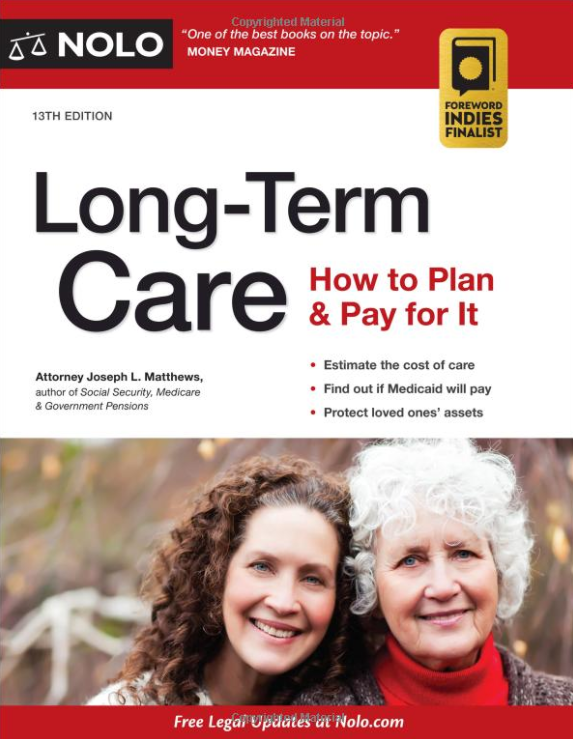If you or a loved one is no longer able to live independently, a long-term care facility may be the right choice for you. But with so many different types of facilities available, it can be difficult to know which one is best suited to your needs. In this article, we will explore the different types of long-term care communities available and explain the differences and benefits of each. This will help you make an informed decision about which type of facility is right for you or a loved one.
Key Takeaways:
- Long-term care facilities provide assistance with activities of daily living for individuals who are no longer able to live independently.
- There are many different types of long-term care communities available, each with its own unique benefits.
- Before choosing a community, it is important to understand what each type has to offer and which one is best suited to your needs.
What Is A Long-Term Care Facility?
A long-term care facility is a residential facility that provides care for individuals who require assistance with their daily living activities. These facilities are designed to provide a safe and supportive environment for residents, and may offer a range of services such as medical care, rehabilitation, and social activities.
Long-Term Care Community

If you can no longer live independently due to old age, physical disabilities, or mental illness, a long-term care community, also known as a nursing home, might be the right choice for you. These residential locations are designed to provide housing and support services to individuals who need assistance with activities of daily living, such as cooking, cleaning, and dressing.
Long-term care communities offer a wide range of amenities, including on-site dining and recreational activities, to help residents feel comfortable. The staff members at these facilities are trained to provide personalized care and support, including medical care and physical therapy, to meet your personal needs.
Whether you require skilled nursing care, rehabilitation services, or hospice care, long-term care communities have trained caregivers available to assist with your personal care needs. Additionally, transportation services are often available to help you access medical services and social activities outside the community.
Video: What Is A Long Term Care Facility
Assisted Living Facility

An Assisted Living Facility is a type of long-term care facility that provides housing and supportive services usually for seniors aged 65 years or older who cannot fully take care of themselves but do not require the level of care provided in a nursing home. In an assisted living facility, the resident can live independently with periodic help from staff.
Assisted living facilities are also referred to as Assisted Living Homes or Senior Apartments and are relatively small residential communities. These facilities offer a range of services, which may include three meals a day, access to basic housekeeping, security, laundry service, and promoting the resident’s independence.
The staff members at these facilities are trained to provide medical care to individuals who need it. This means that individuals in these facilities will have access to medical care, doctors, and nurses, on staff around the clock. This can be highly beneficial for people who cannot leave their rooms due to illness or injury.
Assisted living tends to be more expensive than other options available, but it also offers some unique benefits as well. It is important to note that assisted living facilities are often not covered by health insurance, and residents generally pay out-of-pocket for their care. However, some assisted living residences and senior apartment communities do accept long-term care insurance to help with the cost of care.
Continuing Care Retirement Community

A Continuing Care Retirement Community (CCRC) is a type of facility that provides housing, health services, and long-term care for seniors. CCRCs offer three levels of care: independent living, assisted living, and nursing home care. Independent living is typically available for individuals aged 55 or older.
When you choose to live in a CCRC, all costs are included in your monthly fees, so there are no unexpected increases. The cost of living in a CCRC varies depending on the services needed. CCRCs can be expensive, which is why many individuals who need nursing care do not choose this type of facility.
Residents of a CCRC have the option to move from one level of services to another based on their needs and health condition. Assisted living is a step between independent living and nursing home care. Some facilities also offer respite care, where a resident can live for a certain period of time and then return to their regular living setting.
If you are interested in a CCRC, it is important to know the admission process. In some cases, there might be waiting lists, so it is a good idea to check available options as soon as possible. The cost of living depends on many factors, including the meal plans and services provided.
Independent Living in a Continuing Care Retirement Community (CCRC):
Amenities of independent living in a CCRC include a full kitchen and housekeeping services. As a resident of this level, you can receive assistance from support staff as well as nursing staff if required. This plan does not require you to sign up for health insurance; however, each resident is required to pay a monthly fee.
Assisted Living in a Continuing Care Retirement Community (CCRC) :
This is the level most individuals apply for when they start thinking about moving to a CCRC. This plan allows seniors to maintain autonomy while having all daily living needs provided by staff members. Food menu and housekeeping services are included, but you need to sign up for health insurance if required.
Nursing Home in a Continuing Care Retirement Community (CCRC) :
This level of care usually requires an individual to have long-term care health insurance. The cost of living at this level includes nursing services, meal preparation, housekeeping, and laundry services. It also includes medical coverage that would help cover the costs of visiting doctors and going to the hospital.
Pros of Life in a Continuing Care Retirement Community (CCRC) :
One of the benefits of living in a CCRC is having access to staff members who provide assistance with daily activities, so you do not have to rely on family members or friends anymore. Also, it can be very beneficial for people who need assistance with certain activities but want to stay in the community they are used to living in.
Cons of Life in a Continuing Care Retirement Community (CCRC) :
One of the drawbacks of this option is that it requires a long-term financial commitment. Also, depending on your financial situation, some facilities might have waiting lists. As previously mentioned, each facility has a different price structure, so it would be good to compare available options.
Who Is A Candidate for a Long-Term Care Facility?
Determining whether someone is a candidate for long-term care can be a difficult decision. Several factors should be considered, including the level of impairment, the availability of caregivers, and community resources. It is also important to consider whether the individual can continue living at home with assistance or if a long-term care facility is necessary.
For individuals in the early stages of Alzheimer’s disease, living at home with assistance from family members or hired help may be possible. However, patients who require constant supervision and round-the-clock care may need to be placed in a long-term care facility.
Long-term care can also be used as a temporary solution for those recovering from a stay in the hospital, a chronic illness, or another health-related event. Additionally, it can be a permanent living arrangement for those who cannot perform certain daily tasks on their own due to a health condition or disability.
When planning for long-term care, it is important to involve family and friends in the care planning process. This can help ensure that the individual’s needs are met and that the transition to a long-term care facility is as smooth as possible.
Cost of a Long-Term Care Facility
Navigating Your Options for Long-Term Care
When it comes to long-term care, the cost can vary greatly depending on the specific services offered by each community and the location of the facility. It’s important to shop around and compare pricing options before committing to a long-term care facility.
Nolo’s Long-Term Care – How To Plan & Pay For It
- Explore Your Options For Home Care, Assisted Living And Nursing Homes
- Get The Most Out Of Medicaid, Medicare And Veterans’ Programs
- Evaluate Whether Long-Term Care Insurance In Worth The Significant Expense
- Consider The Special Needs Of People With Dementia Or Alzheimer’s, And
- Protect Your Loved Ones From Elder Fraud.
If you click this link and make a purchase, we earn a commission at no additional cost to you.

FAQs
What are the benefits of living in a long-term care facility?
Long-term care facilities provide a safe and supportive environment for individuals who require assistance with their daily living activities. These facilities offer a range of services, such as medical care, rehabilitation, and social activities, which can help improve the quality of life for residents. Additionally, long-term care facilities often have trained staff who can provide round-the-clock care, ensuring that residents receive the attention and support they need.
What are the eligibility assessments for long-term care?
Eligibility assessments for long-term care vary depending on the type of facility and the level of care required. Generally, individuals must have a medical need for long-term care and meet certain financial criteria to be eligible for government-funded programs such as Medicaid. Private pay options may also be available.
What are the CDC guidelines for long-term care facilities?
The Centers for Disease Control and Prevention (CDC) provides guidelines for long-term care facilities to help prevent the spread of infectious diseases. These guidelines include recommendations for infection control practices, staff education and training, and visitor restrictions during outbreaks.
Additional Reading
Conclusion
Long-term care facilities are a type of senior living facility that provides assistance from outside caregivers. These facilities offer different levels of care, with assisted living being the least intensive and long-term care communities having the most intense level of care provided. The cost varies depending on which type you choose to-the more extensive your needs, the higher the cost.
These facilities offer a variety of services, including nursing care, rehabilitation therapy, social work assistance, and financial management counseling for elderly and disabled individuals who need help managing their affairs. It’s important to think about what will happen if your loved one needs this type of care in the future and prepare them now with guidance on how to make decisions when they are unable to do so.
During the COVID-19 pandemic, many long-term care facilities have implemented strict safety protocols to protect their residents and staff. The Eldercare Locator and Area Agency on Aging can help you find long-term care facilities in your area. The National Institute on Aging provides resources and information on long-term care. The Care Compare tool can help you compare different long-term care facilities to find the best fit for your loved one.
Overall, long-term care facilities can provide a safe and supportive environment for elderly and disabled individuals who need assistance with daily activities. It’s important to research and carefully consider your options to find the best fit for your loved one’s needs.
If you have experience with any type of Long-Term Care Facility or would like to share an opinion about them, please comment below.










